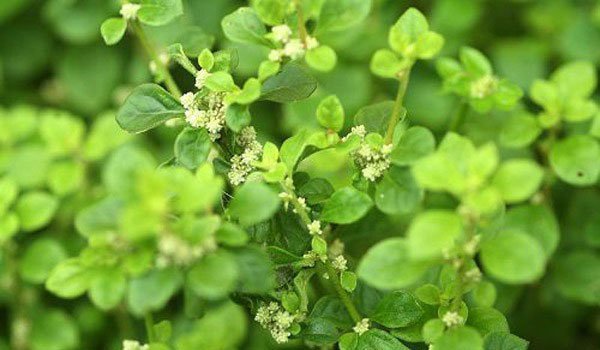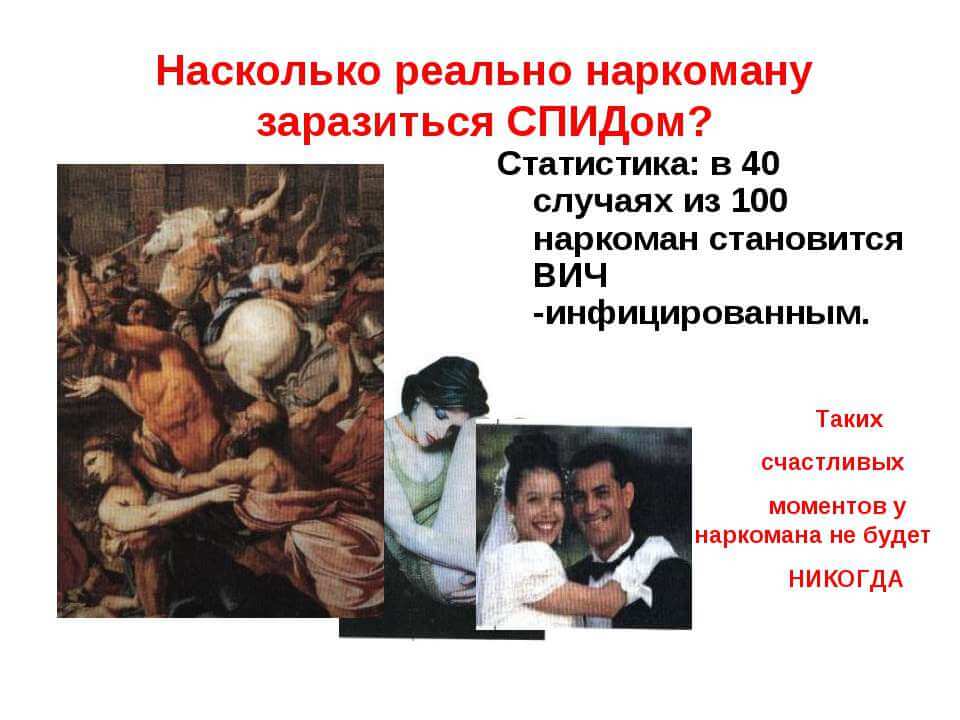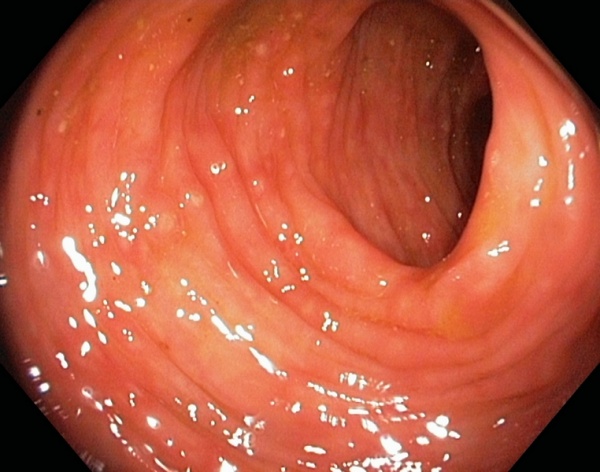Hypertrophy of the left ventricle of the heart: treatment with folk remedies. Causes, symptoms and diagnosis. Folk recipes
Coming from the left atrium. From the ventricle, oxygenated blood is sent to the aorta (through the aortic valve) and then through the blood vessels (arteries) to each individual organ.
With hypertrophy due to the growth of the muscular interventricular septum, the lumen of the left ventricle of the heart is significantly narrowed. As a result, circulatory and metabolic processes throughout the body are disrupted, since the organs do not receive enough oxygen and essential trace elements.
Cardiac myocardial hypertrophy - what is it?
Myocardial muscle cells perform the function of contraction and relaxation, depending on the phase (systole or diastole, respectively). Hypertrophy develops as a result of an overload of the heart muscle. It can be caused by the entry of a large volume of blood into the ventricle and then by the influence of high pressure due to the strong stretching of the muscle.
If this happens regularly, then the muscle cells change their structure - they become thickened and more elongated, this happens in order to provide sufficient contraction force and throw all the blood out of the ventricle into the aorta.
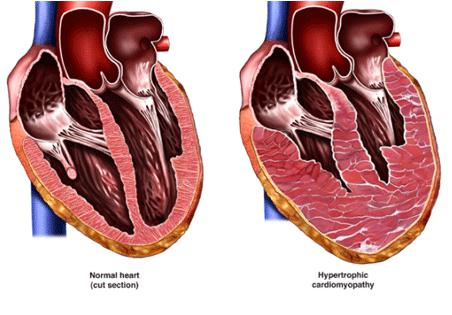
Structural changes in cells affect the thickness of the interventricular septum, it becomes wider, and the mass of the myocardium increases. Enlarged muscle cells need more oxygen, but since the coronary arteries cannot supply more arterial blood, hypoxia develops - oxygen starvation.
Varieties of hypertrophy
Depending on the cause of hypertrophy, it can be eccentric or concentric.
The first type develops due to the entry of a large amount of blood into the ventricle, followed by a strong stretching of its walls. This may be due to obesity or insufficiency of the heart valves (aortic and mitral).
- The walls of the ventricle thicken, and the cavity expands. In this case, the work of the heart is not significantly disturbed, since the volume of blood entering the aorta does not change.
- Preservation of the size of the walls of the ventricle, but at the same time increases the mass of the myocardium. This happens due to the large amount of blood entering the ventricle, it becomes like a filled ball. But, despite this, a much smaller volume of blood is ejected into the aorta.
There are also hypertrophy:
- With obstruction of the outflow tract - in this case, the muscular walls thicken inside the ventricle and occupy most of its cavity. As a result, subaortic stenosis can develop, blood flow is significantly impaired.
- Without obstruction - may be in the case of diffuse hypertrophy, which has a concentric type.
- Asymmetric - thickening is localized in the area of \u200b\u200bthe muscular septum. With such hypertrophy, both the presence and absence of obstruction are possible.
Depending on the thickness of the wall increased during hypertrophy, there are three stages:
- up to 21 mm;
- 21-25 mm;
- over 25 mm.
The disease contributes to the disruption of the functioning of the heart muscle, the duration of the phases of systole and diastole changes, and insufficient saturation of organs with oxygen is manifested. That is why hearts, heart failure, stroke and heart attack are dangerous consequences that left ventricular hypertrophy can cause. Treatment with folk remedies should not be independent, otherwise taking the wrong medications can exacerbate the problem.
Causes of the disease
Thickening of the muscle walls and septum is a consequence of overexertion. It occurs when a large volume of blood enters the ventricle and needs to be pushed out into the aorta. The pressure on the walls and their stretching are above the norm. Because of this, hypertrophy of the left ventricle of the heart develops. The reasons may be different. But mostly these are certain diseases:
- The most common cause is arterial hypertension. High pressure causes constant spasmolytic manifestations in the vessels and high resistance in them.
- Acquired or congenital heart defects - valve insufficiency, narrowing of a certain part of the aorta (coarctation).
- The presence of calcium deposits on the walls of the aorta or heart valves or atherosclerosis of the aorta.
- Hyperthyroidism (disturbances in the work of the endocrine system, in particular excessive work of the thyroid gland), diabetes mellitus, diseases of the adrenal glands.
Age and sex characteristics, as well as proper nutrition, have a great influence.
Symptoms of the disease
Hypertrophy of the left ventricle of the heart, the symptoms of which do not have a clear clinical picture, may not make itself felt for several years. But, despite this, there are a number of responses of the body, in the presence of which it is necessary to pay attention to the state of one's health:

Often people, having discovered some symptoms of the disease, treat the heart with folk remedies. However, the best solution is to visit a qualified cardiologist who will make the correct diagnosis and prescribe the appropriate treatment.
Treatment of the disease
Since hypertrophy develops as a result of the progression of various diseases, in its treatment it is necessary to initially eliminate the original pathology. How to treat left ventricular hypertrophy of the heart, the doctor should explain after the necessary diagnosis.
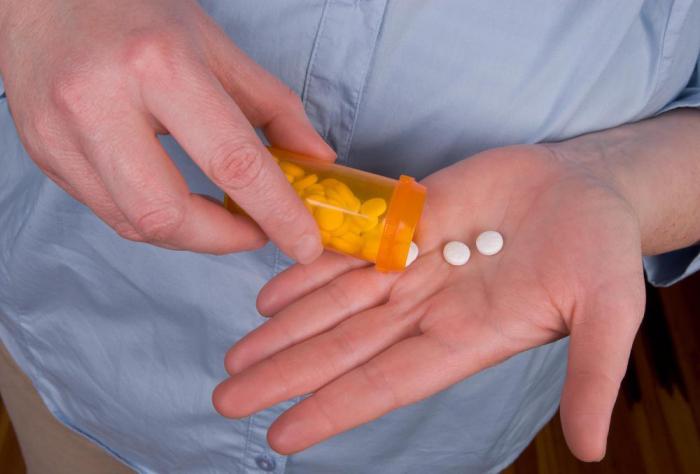
You should not take drugs without medical advice, even if they are aimed at treating your disease. Since without taking into account the personal characteristics of the body and the tolerance of certain components of the drug, one can only aggravate the course of the disease.
Treatment of hypertrophy with lily of the valley
Lily of the valley drops are often used in the practice of eliminating heart diseases. Left ventricular hypertrophy is no exception. Treatment with folk remedies in any case must be approved by the attending physician.
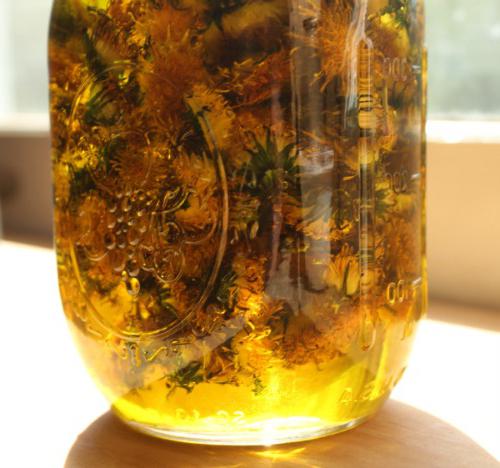
The recipe is to prepare the tincture. Lily of the valley flowers are placed in a bottle (the bottle is completely filled with flowers), filled with alcohol (up to the top) and infused for two weeks. Take a tablespoon before meals (3 times a day).
St. John's wort treatment
St. John's wort (100 g), poured with water (2 l) and boiled for ten minutes, then it must be cooled, strained and add a spoonful of honey. It is necessary to take a third of a glass half an hour before meals.

This method, according to patients, is most effective when left ventricular hypertrophy is detected. Treatment with folk remedies in some cases can have a great impact on the general condition of the patient.
garlic treatment
Chopped garlic is mixed with honey (in equal proportions in any suitable container) and infused for a week (periodically you need to shake the container). Such a recipe helps well with such a diagnosis as left ventricular hypertrophy of the heart. Treatment with folk remedies in this option can be used year-round. You need to take the medicine daily, one teaspoon.
Treatment of the heart with folk remedies in many cases has a positive effect on health. But before taking any drugs and herbs, you should consult your doctor.
- Intercostal neuralgia - what is it and how to treat
- How to quickly get rid of dry corns on the legs
- How to treat left ventricular hypertrophy
- Rating of the best drugs for rotavirus for children
- Making tea from currant leaves, the benefits and harms of the drink
- How to drink hydrogen peroxide according to Neumyvakin - an oral regimen
- Features of the treatment of plantar fasciitis with folk remedies
- The composition and beneficial properties of parsley root
- How to get pregnant quickly? Folk remedies
- Herbs-ants in the "pot-bellied" period or the use of herbal medicine during pregnancy
- Why does a sore throat and dry cough occur, and what treatment is required?
- Guy's Room Design: Ideas and Examples
- General rules for drawing up a foundation plan Drawings of the foundation of a house
- modern art deco bedroom small art deco bedroom
- Pansies: characteristics and photos of flowers
- Making an art deco bedroom: the choice of materials Beige art deco bedroom
- Bedroom interiors in art deco style Bedroom art deco style beige
- Young: planting and care in the open field Young planting and care in the open
- Varieties for open ground
- Pansies: cultivation and care in the open field




